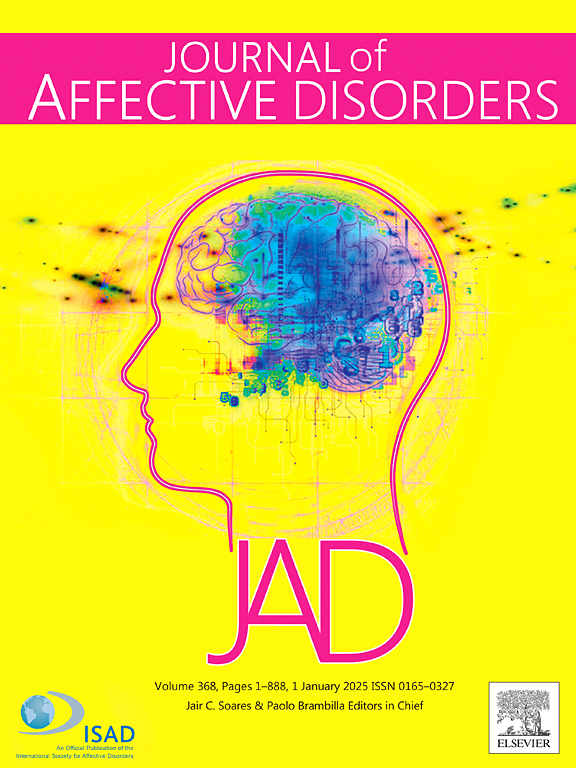一项ERP研究描述了特质焦虑如何调节主动和被动反应抑制,而不受不同情绪情境的影响。
IF 4.9
2区 医学
Q1 CLINICAL NEUROLOGY
引用次数: 0
摘要
背景:人类的反应抑制可分为主动(自上而下)和反应(自下而上)抑制过程。尽管有人提出特质焦虑会改变个体的反应抑制,但它是否以及如何调节不同情绪情境下的主动和反应抑制过程仍不清楚:我们将改编的情绪停止信号任务与高时间分辨率电生理记录相结合,比较了高特质焦虑和低特质焦虑参与者的结果:结果:在行为层面上,高特质焦虑和低特质焦虑的人在主动或被动抑制方面没有发现明显差异。然而,事件相关电位分析表明,虽然特质焦虑可能会影响早期的物体识别(表现为 P2 振幅增大),但高特质焦虑者可能会表现出完整的主动抑制,但反应性抑制受损(表现为 P3 峰值潜伏期延迟)。此外,行为和事件相关电位分析表明,消极情绪情境会损害反应性抑制,而与特质焦虑的影响无关:结论:特质焦虑会损害反应性抑制,但不会损害主动性抑制,与中性或负面情绪情境无关。本文章由计算机程序翻译,如有差异,请以英文原文为准。
An ERP study characterizing how trait anxiety modulates proactive and reactive response inhibition independent of different emotional contexts
Background
Human's response inhibition could be classified as proactive (top-down) and reactive (bottom-up) inhibition process. Although trait anxiety has been proposed to alter an individual's response inhibition, whether and how it modulates the proactive and reactive response inhibition processes in different emotional contexts remains unclear.
Methods
We combined an adapted emotional Stop-Signal Task with high-temporal resolution electrophysiological recordings to compare the results of high and low trait anxiety participants.
Results
At the behavioral level, no significant differences were found between high and low trait anxiety individuals in either proactive or reactive inhibition. However, the event-related potential analysis suggested that although trait anxiety might affect early object recognition, indicated by a greater P2 amplitude, high trait anxiety individuals may exhibit intact proactive inhibition but impaired reactive inhibition, signified by a delayed P3 peak latency. In addition, behavioral and event-related potential analyses revealed that negative emotional context impaired reactive inhibition independent of the effect of trait anxiety.
Conclusions
Trait anxiety impairs reactive inhibition but not proactive inhibition independently of neutral or negative emotional contexts.
求助全文
通过发布文献求助,成功后即可免费获取论文全文。
去求助
来源期刊

Journal of affective disorders
医学-精神病学
CiteScore
10.90
自引率
6.10%
发文量
1319
审稿时长
9.3 weeks
期刊介绍:
The Journal of Affective Disorders publishes papers concerned with affective disorders in the widest sense: depression, mania, mood spectrum, emotions and personality, anxiety and stress. It is interdisciplinary and aims to bring together different approaches for a diverse readership. Top quality papers will be accepted dealing with any aspect of affective disorders, including neuroimaging, cognitive neurosciences, genetics, molecular biology, experimental and clinical neurosciences, pharmacology, neuroimmunoendocrinology, intervention and treatment trials.
 求助内容:
求助内容: 应助结果提醒方式:
应助结果提醒方式:


